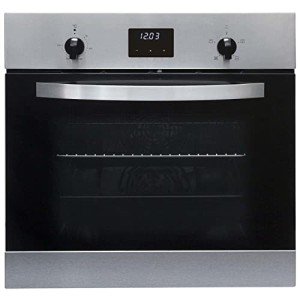12 Companies Are Leading The Way In Oven Hob

Understanding Oven Hobs: The Heart of Culinary Crafting
In the world of modern-day kitchens, the oven hob stands out as an important device. Not only is it a central part for cooking a variety of meals, but it also affects kitchen looks, functionality, and effectiveness. This short article digs into the types of oven hobs, their features, benefits, and upkeep suggestions. In addition, it addresses some regularly asked questions to provide an extensive understanding of this necessary kitchen device.
Kinds Of Oven Hobs
Oven hobs can be classified into several types based upon their energy source and design. Understanding these variations can help customers make notified choices when selecting the ideal hob for their kitchen needs.
1. Gas Hobs
Gas hobs use gas or propane as fuel, offering exact temperature level control and rapid heat. They are favored by many chefs for their capability to provide visual feedback through flame.
Pros:
- Quick heat-up time.
- Precise temperature level adjustments.
- Suitable with all types of pots and pans.
Cons:
- Requires a constant gas supply.
- Safety issues with open flames.
- Needs more upkeep.
2. Electric Hobs
Electric hobs are powered by electricity and function smooth glass or ceramic surfaces. They frequently come in 2 types: coil and strong.
Pros:
- Sleek appearance.
- No open flames, decreasing safety risks.
- Easy to clean.
Cons:
- Slower to warm up and cool down.
- May require particular cookware (induction).
- Some may have irregular heat distribution.
3. Induction Hobs
Induction hobs use electromagnetic energy to straight heat up pots and pans. They just deal with ferromagnetic cookware.
Pros:
- Very energy-efficient.
- Quick heating and cooling times.
- Safe, as the surface area remains relatively cool.
Cons:
- Limited to specific types of cookware.
- Greater initial cost.
- Can produce noise when in usage.
4. Strong Plate Hobs
These electric hobs feature strong metal plates that warm up and keep heat for cooking.
Pros:
- Durable and trustworthy.
- Straightforward operation.
Cons:
- Takes time to heat up.
- Less effective than induction and gas designs.
| Hob Type | Heat Source | Looks | Upkeep |
|---|---|---|---|
| Gas Hobs | Gas | Conventional | Moderate |
| Electric Hobs | Electrical power | Modern/Sleek | Low |
| Induction Hobs | Electro-magnetic | Contemporary | Low |
| Solid Plate Hobs | Electrical power | Traditional | Typical |
Features to Consider When Choosing an Oven Hob
When picking the perfect oven hob for your kitchen, there are several important features to take into account. These consist of:
- Size: Ensure the hob fits the designated area in your kitchen.
- Variety of Burners: Consider your cooking design and the number of burners you'll need.
- Control Type: Look for user-friendly controls, whether touch-sensitive or knobs.
- Safety Features: Many modern hobs include precaution like flame failure devices or kid locks.
- Energy Efficiency: Choose energy-efficient designs to save on energy bills and lower your ecological impact.
Advantages of Using an Oven Hob
The oven hob provides several benefits that cater to both amateur cooks and expert chefs. Here are some essential advantages:
- Versatility: Whether boiling, frying, simmering, or sautéing, an oven hob accommodates numerous cooking techniques.
- Convenience: Many hobs featured additional features like timers and automated shut-off systems for added convenience in hectic kitchen areas.
- Improved Cooking Control: The immediate heat responses of gas and induction hobs enable for much better control over cooking temperature levels.
- Style Enhancement: Modern hobs can enhance the general visual of a kitchen, adding a contemporary touch.
Upkeep Tips for an Oven Hob
To make sure the durability and effectiveness of an oven hob, correct upkeep is important. Here are some maintenance pointers:
Regular Cleaning:
- Use a soft fabric and moderate cleaning agent to clean surfaces after each use.
- For induction and ceramic hobs, prevent abrasive cleaners to avoid scratching.
Inspect for Wear and Tear:
- Inspect rubber seals and connections in gas hobs frequently for any damages or leaks.
- Guarantee electrical connections are safe and secure in electric hobs.
Professional Servicing:
- Schedule regular maintenance checks with a certified specialist to avoid major issues.
The oven hob is a crucial component in any kitchen, acting as a focal point for culinary endeavors. Whether selecting gas, electric, or induction, comprehending the various types, functions, and upkeep requirements is vital for making an educated decision. A well-chosen hob not just improves cooking efficiency however also improves the overall kitchen experience.
Regularly Asked Questions (FAQs)
1. What kind of hob is best for a novice?
Electric hobs are typically preferred by beginners due to their ease of use and upkeep.
2. Can I utilize all cookware on an induction hob?
No, induction hobs require ferromagnetic cookware for them to work effectively.
3. How do I know if my gas hob is working efficiently?
Frequently inspect for even flame distribution and listen for any hissing noises that might show leaks. If in doubt, speak with a professional.
4. Is a greater cost constantly much better for hobs?
Not always. While Recommended Webpage -priced models might offer innovative features, numerous mid-range products offer excellent efficiency and longevity.
5. Can I install a hob myself?
It is advisable to employ an expert, especially for gas hobs, due to security concerns and local regulations.
By comprehending the subtleties of oven hobs, home cooks can make a well-informed decision that aligns with their culinary ambitions and kitchen designs. Picking the right hob improves both the cooking experience and kitchen aesthetics, making it an essential financial investment for any home.

